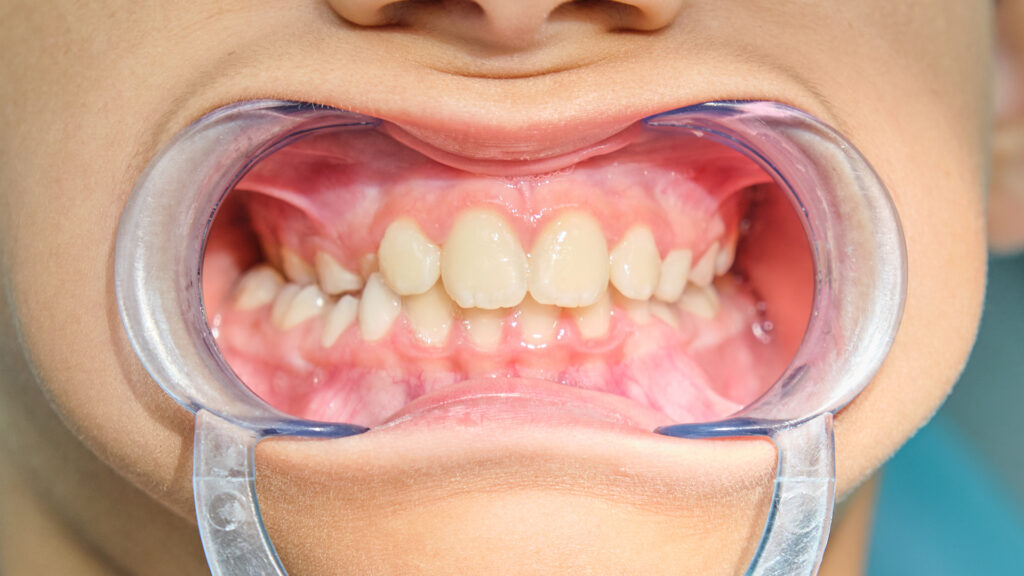
Gingivitis
You may wake up one day feeling tight and pain emanating from somewhere in your mouth. You may think you were hit by a thorn or a foreign object stuck between the teeth and pressing on the gums. Perhaps this pain is the result of a blow you received in the jaw area while playing football with friends when The team was overwhelmed with enthusiasm while playing and scoring goals. All these possibilities ran through your head while heading to the bathroom. You looked in the mirror and noticed this painful red swelling in the gum area. What is this, I wonder? You will learn later when you visit the dentist that you are suffering from gingivitis, and the doctor will place a lot of blame on you for neglecting dental hygiene, which is the main cause of the accumulation of plaque, which is rich in harmful bacteria that cause gingivitis.
Symptoms of gingivitis
The most common signs and symptoms of gingivitis are:
- Bleeding gums spontaneously or while brushing teeth
- Red gums. The gingival margin is red or purple
- The gums are swollen, thick, and irritated. The teeth may appear small
- Gingivitis and discoloration
- Bad breath that does not go away, even with regular tooth brushing
- Gum recession and recession
- Pain and sensitivity in the gums
- Sensitivity to hot or cold foods
- Feeling pain when chewing food
- Loose or mobile teeth
Causes of gingivitis
The main and most common cause of gingivitis is poor oral hygiene. This stimulates the formation of plaque that accumulates on your teeth.
Plaque is a sticky, colorless film deposited on the surface of the teeth and gums. It comprises sugars and bacteria, which feed on food debris that remains on the teeth and gums to develop and grow.
When bacteria grow and become active within the plaque layer, they secrete acids and cause inflammation of the gum tissue surrounding the teeth. In addition, if it is not removed quickly, plaque tends to harden and become dark around the teeth, which is what we commonly call tartar.
For this reason, it is very important to get rid of plaque with daily brushing and proper oral hygiene, along with regular check-ups at the dental clinic.
Many causes and factors contribute to gingivitis, such as:
- Harmful habits such as smoking
- Getting older
- Vitamin C deficiency
- Having diabetes
- Crooked or crowded teeth that do not allow for proper cleaning
- Diseases that affect immunity, such as leukemia or HIV/AIDS
- Cancer treatments
- Hormonal changes, such as pregnancy, menstruation, or use of contraceptives
- (You have a family history of gum disease) Genetic and genetic factors.
- Viral and fungal infections
Types of gingivitis
Simple gingivitis
It is the most common type of gingivitis and is characterized by:
- Red or swollen gums
- Bleeding gums when brushing teeth
- Pain or sensitivity in the gums when eating certain foods
- Bad breath and bad mouth taste.
- You don’t have to get all the symptoms, because simple gingivitis manifests itself in several ways.
Hypertrophic gingivitis
This gingivitis is caused by certain medications, especially antiepileptics, and is characterized by swollen and very red gums.
Localized or gestational hypertrophic gingivitis
This is due to hormonal factors in pregnant women and appears in the form of local inflammation and bleeding. It is usually accompanied by severe pain
Treatment of gingivitis
- The dentist will always advise the appropriate treatment depending on the severity of the condition as follows:
- In mild cases, only improved dental hygiene may be necessary.
In cases of advanced gingivitis, we usually resort to: - Mouthwash with saline or chlorhexidine
- Gum treatment or tartar scraping: that is, a deeper cleaning of the teeth, to get rid of tartar and bacteria accumulated inside the gums.
- In severe infections, antibiotics such as amoxicillin may be given orally
Prevention of gingivitis
To prevent gingivitis and bleeding, the best recommendation we can give is:
- Maintain oral hygiene and brush your teeth properly.
- Control and manage diabetes if you have it.
- Stop smoking or using other tobacco products.
- Use floss every day to remove bacteria between the teeth.
- Limit your intake of foods and drinks that contain alcohol and excess sugar.
- go to the dentist at least once for an annual checkup.
How should you brush your teeth to prevent gingivitis and bleeding?
- Gently brush your teeth using a brush angled at a 45-degree angle relative to the tooth, at least twice a day for two minutes, clean your tongue, and use dental floss to periodically remove food debris that may remain between your teeth.
- In addition, you should not forget to go for oral examinations, as these examinations can detect in advance whether there is a buildup of tartar or any other problem that affects your oral health.
conclusion
We all know that the pain resulting from diseases of the jaw and teeth, including gingivitis, may be very annoying and cause the patient to be anxious and uncomfortable, and also cause distress while eating and drinking, which reduces concentration at work and the quality of life. Therefore, one must quickly consult a dentist to search for the best solution. Treatment methods are available to get rid of this annoying pain
Follow us on Instagram The Gentle Dentist
Watch on YouTube Teeth Whitening
Sources
- https://my.clevelandclinic.org/health/diseases/10950-gingivitis-and-periodontal-disease-gum-disease
- https://www.mayoclinic.org/ar/diseases-conditions/gingivitis/symptoms-causes/syc-20354453
- https://www.medicalnewstoday.com/articles/241721#signs-and-symptoms
- https://www.healthline.com/health/gingivitis
- Myth or Fact? Everything You Need to Know About Teeth Whitening at Home
- Dental Implants: The Perfect Solution for Tooth Loss and Restoring Self-Confidence
- Secrets of a Healthy Mouth: Daily Habits That Protect Your Teeth from Cavities
- Thumb sucking in children and its effect on dental health.
- Benefits of regular teeth cleaning

